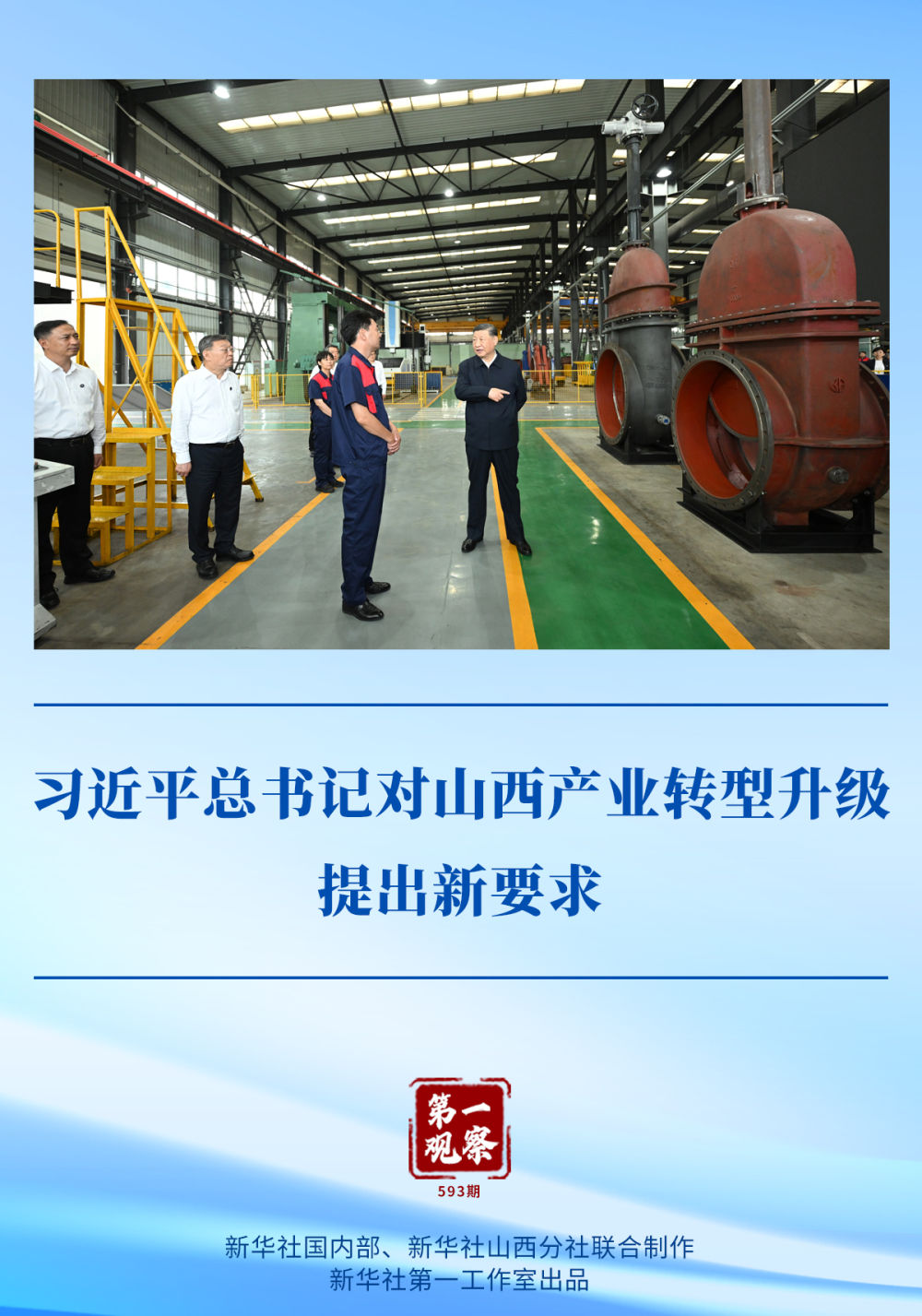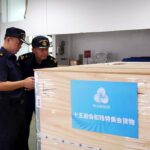On July 7, during an inspection at Yangquan Valve Co., Ltd., the General Secretary emphasized the need to align with market demand, strengthen technological innovation, and revitalize traditional industries. The following day, while listening to a work report from the Shanxi Provincial Party Committee and Government, he further stressed the importance of transforming local development by better leveraging resource advantages into developmental strengths.
For resource-dependent regions to achieve new growth and for traditional industries to gain renewed vitality, transformation and upgrading are critical. The shift toward new economic drivers hinges on structural adjustments and industrial transformation.
Since the 18th National Congress of the Communist Party of China, the General Secretary has visited Shanxi multiple times, touring exhibitions and workshops, consistently emphasizing industrial transformation and upgrading.
He once pointed out that Shanxi must act with urgency while maintaining long-term strategic planning, “striving to pioneer a new path for transformational development.”
During this inspection, the General Secretary underscored the need to take new steps in advancing the transformation of the resource-based economy. From “a new path” to “new steps,” his focus remains unwavering, with deepening requirements.
(1)
Transformation and upgrading signify a shift in development models, with breaking path dependence being particularly crucial.
Shanxi is a major coal-producing province, historically known as “lighting half of the nation’s lamps.” The General Secretary once highlighted the structural challenges in its economy: “For a long time, Shanxi has thrived on coal but also been constrained by it, with over-reliance leading to industrial monoculture.”
How to break this dependence? In the new era, the central government tasked Shanxi with building a national comprehensive reform zone for resource-based economic transformation. The General Secretary has repeatedly provided clear guidance:
In June 2017, during an inspection in Shanxi, he noted, “Achieving economic transformation in resource-dependent regions and fostering diversified industrial support are major challenges requiring deep reflection and breakthroughs.”
In May 2020, at the Shanxi Transformation and Comprehensive Reform Demonstration Zone’s administrative service center, he urged, “Transformation requires urgency but also long-term strategy—we cannot wait until resources are depleted to act.”
In January 2022, while visiting Shanxi Ruiguang Thermal Power Co., Ltd., he stressed, “Accelerate green and low-carbon technological innovation to continuously optimize industrial structure.”
Reducing reliance on coal while increasing innovation—Shanxi has followed the central government’s directives, focusing on new industrialization and energy systems to build a modern industrial framework.
This time, the General Secretary clearly stated, “Maintain resolve and advance transformation steadily,” emphasizing “energy transition, industrial upgrading, and diversified development.” These directives further chart the course for Shanxi’s transformation.
(2)
Breaking path dependence does not mean abandoning inherent advantages but re-evaluating strengths to achieve breakthroughs through structural adjustments.
During this inspection, the General Secretary emphasized: “Steadfastly advance the transformation of traditional industries, strategically develop emerging and future industries based on local conditions, and gradually build a modern industrial system reflecting Shanxi’s unique strengths.”
Understanding these directives clarifies that large, established industries can—by respecting economic realities, accelerating innovation, and enhancing competitiveness—better convert resource advantages into developmental gains, achieving sustainable growth, ecological improvement, and better livelihoods.
Inside Yangquan Valve’s workshop, products range from large gas valves to small fuel ball valves, varying in type and design.
Long rooted in Yangquan’s coal industry, the company has specialized in valves, filling domestic technological gaps while upgrading equipment. By innovating with products like hydrogen pipeline ball valves, it embraces new productive forces amid energy sector transformation.
This evolution into a specialized “little giant” enterprise exemplifies leveraging strengths for revitalization.
(3)
Transformation is a systemic process, not achieved overnight.
Breaking path dependence inevitably brings challenges. Success depends on scientific self-assessment, leveraging diverse conditions, and balancing national coal-supply responsibilities with transformation—testing reform resolve.
Initiatives like establishing Shanxi’s national resource-based economic reform pilot zone and approving its energy revolution plan reflect the central government’s commitment to helping Shanxi “pioneer a new path.”
Previously, the General Secretary outlined precise strategies for sustainable development: “Drive transformation through supply




